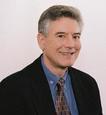Spinal Decompression Therapy, first approved by the FDA in 2001, has since evolved into a cost-effective treatment for herniated and degenerative spinal discs; one of the major causes of back pain and neck pain.
Spinal Decompression Therapy is a non-invasive, non-surgical treatment performed on a special, computer controlled table similar in some ways to an ordinary traction table. A single disc level is isolated and by utilizing specific traction and relaxation cycles throughout the treatment, along with proper positioning, negative pressure can actually be created within the disc. It works by gently separating the offending disc 5 to 7 millimeters creating negative pressure (or a vacuum) inside the disc promoting the retraction of the bulging disc tissue. This negative pressure also pulls water, oxygen, and nutrients into the disc, thereby re-hydrating a degenerated disc and bringing in the nutrients needed to begin the healing process.
What is negative pressure and how can it treat my disc herniation or bulge?
Negative pressure is a suctioning or vacuum type effect that is created by the disc during the Spinal Decompression treatment. This vacuum effect can actually help pull the herniated disc material back into the disc itself, allowing the outer part of the disc to heal.
How is Spinal Decompression different from regular traction?
The key to Spinal Decompression is the high tech computer that is being used to create and follow a specific protocol that has been individualized for the patient. This computer allows the treatment to go through specific traction and relaxation cycles to create the negative pressure needed to treat the disc. Regular traction machines, even intermittent traction machines, don't have the capability to follow such a complex treatment, thus they can't create the vacuum effect that is needed for treatment and healing.
Who can Benefit from Spinal Decompression?
Spinal Decompression Therapy, first approved by the FDA in 2001, has since evolved into a cost-effective treatment for herniated and degenerative spinal discs; one of the major causes of back pain and neck pain. It works on the affected spinal segment by significantly reducing intradiscal pressures. This is a conservative procedure for patients suffering with bulging or herniated discs, degenerative disc disease, posterior facet syndrome, sciatica, failed back surgery syndrome, and non-specified mechanical low back or neck pain.
Excessive stress or injury to a disc weakens the outer fibers. As the outer fibers weaken, parts of the interior of the disc bulge out and the disc compresses or loses height. As it loses height it follows that the vertebrae above and below get closer together decreasing the amount of space (spinal stenosis) through which the spinal nerve root exits . As the bulge increases and the space decreases the spinal nerve root that exits at that level is also compressed (pinched). This leads to muscle spasms and inflammation (swelling) further diminishing the space for the nerve; and, because the normal mechanics (movement) of the joints are disturbed, interferes with the normal pumping action supplying nutrition to the disc. Starved for adequate nourishment the outer fibers of the disc become drier and weaker (degenerate) accelerating the process. Non-surgical spinal decompression or de-compression is designed to break this cycle.
AUTHOR BIOGRAPHY
Dr. Michael L. Hall, D.C. practices at Triangle Disc Care in Raleigh, North Carolina specializing in Spinal Decompression for the treatment of acute and chronic neck pain and back pain due to herniated, degenerated discs. This is a conservative procedure for patients suffering with bulging or herniated discs, degenerative disc disease, posterior facet syndrome, sciatica, failed back surgery syndrome, and non-specified mechanical low back or neck pain.
For more information call 919-571-2515, click on www.triangledisc.com or email office@triangledisc.com. Type "Free eBook - 101 Things I Need to Know about my Bad Back" into the subject line.

Post new comment
Please Register or Login to post new comment.